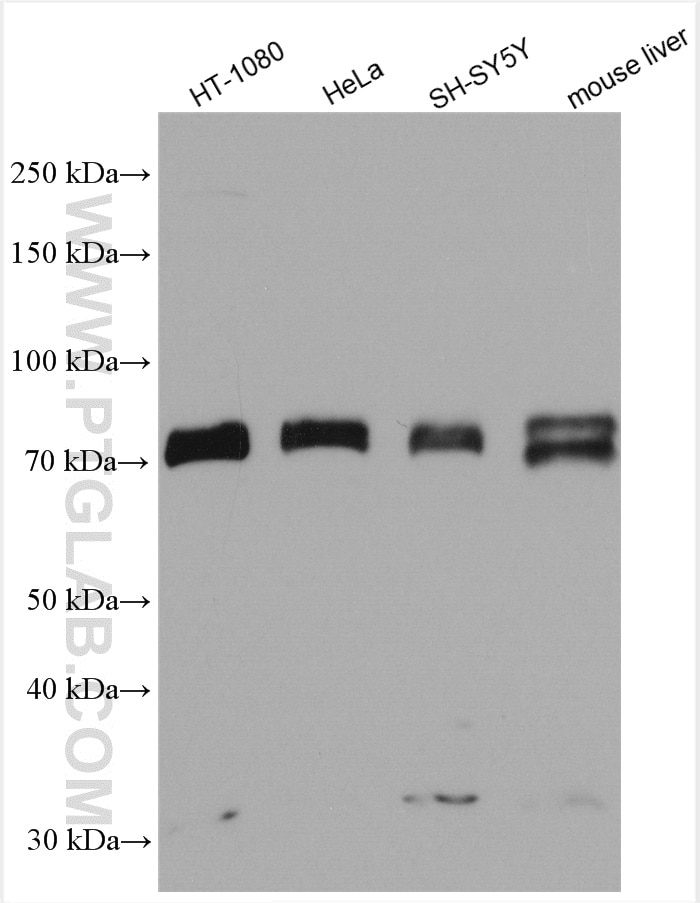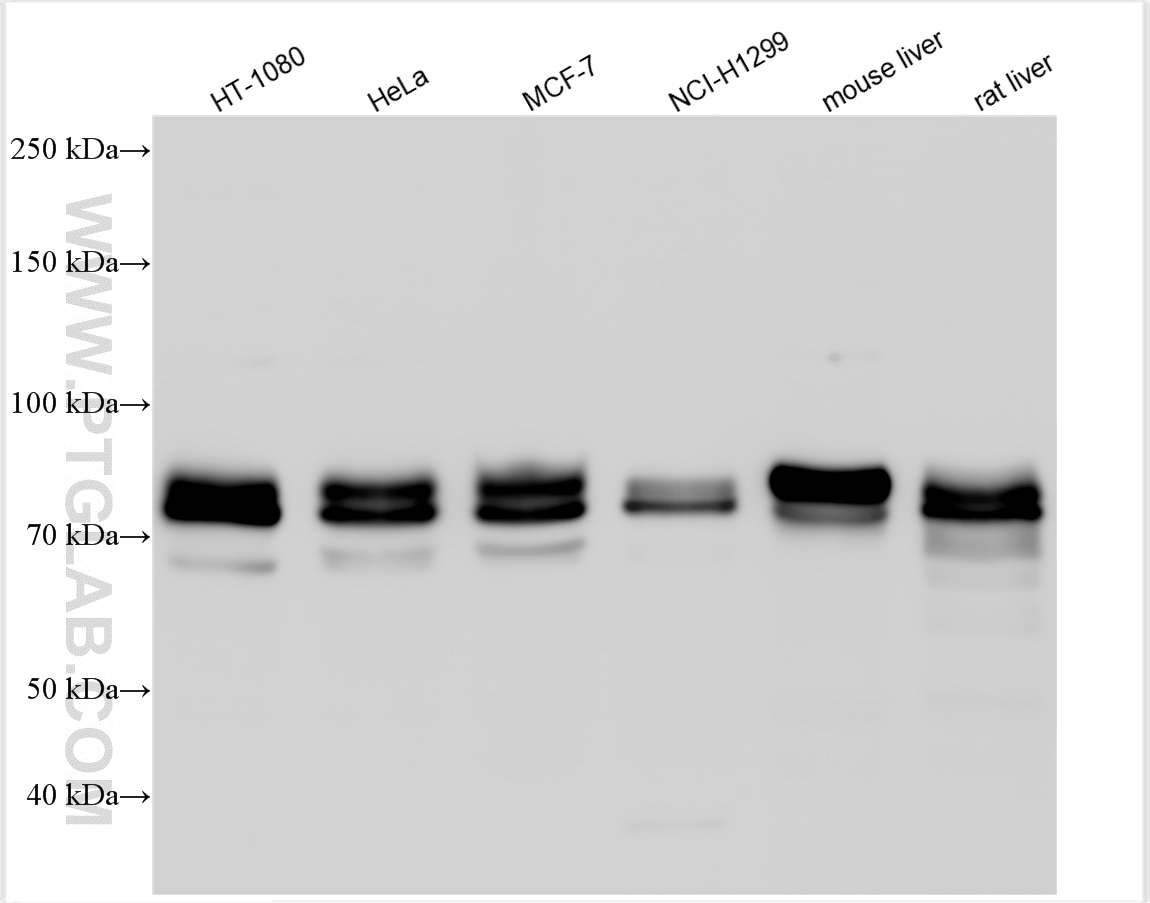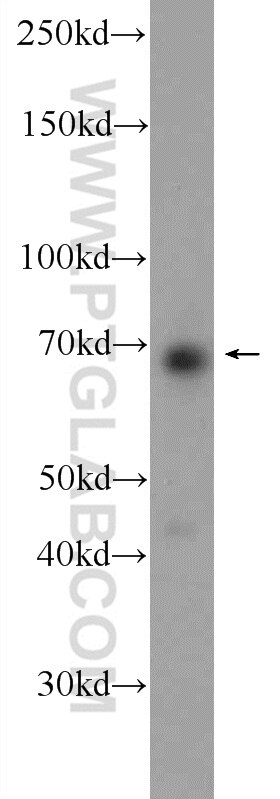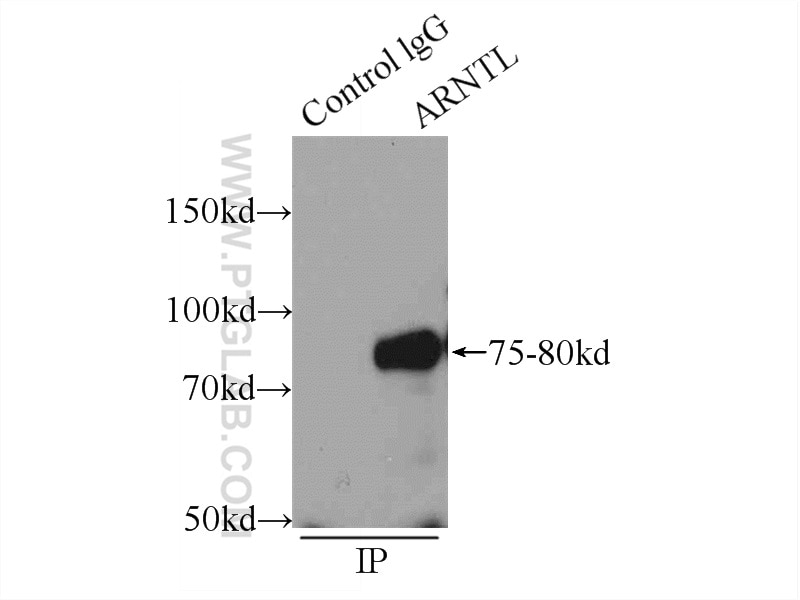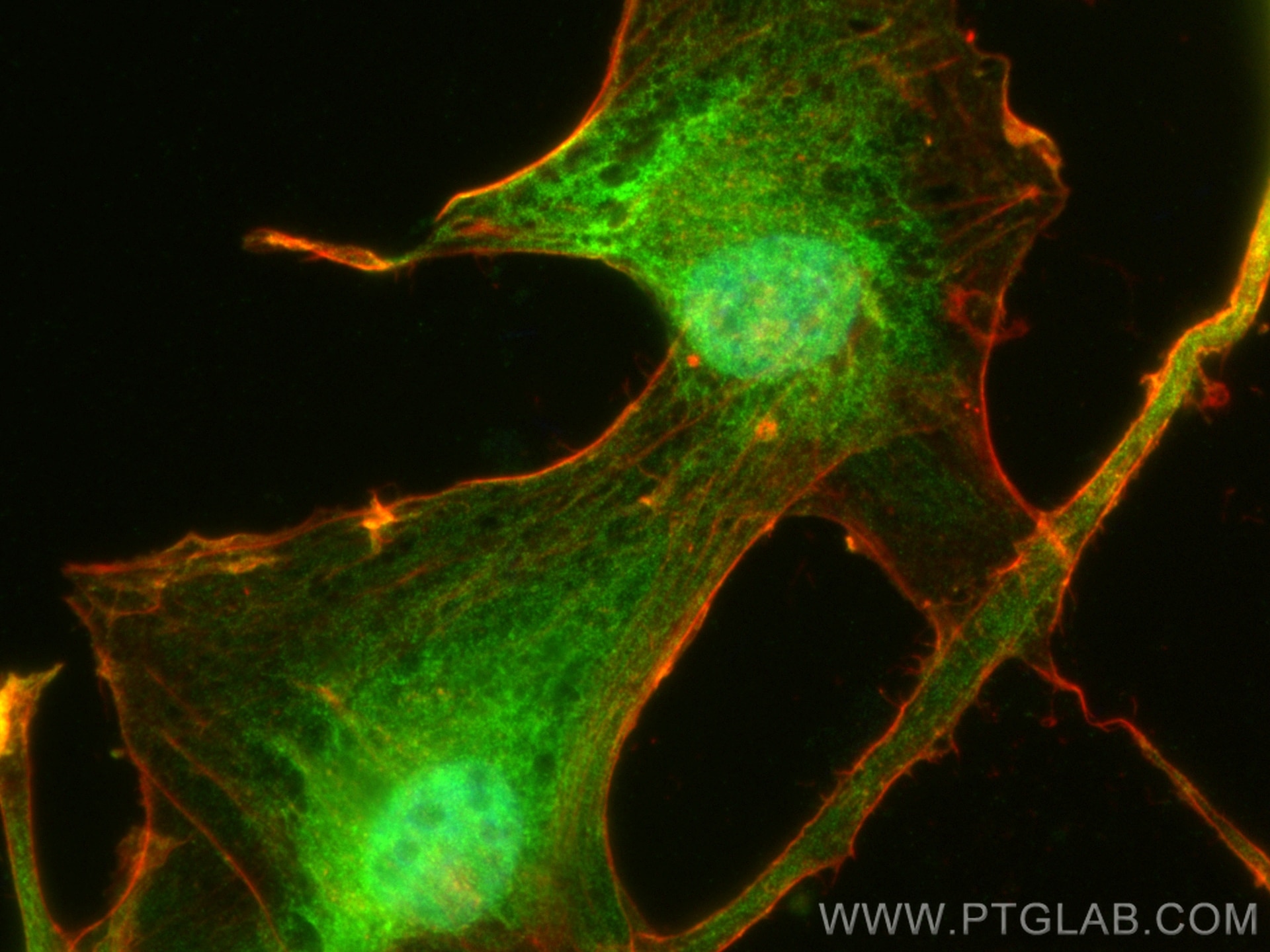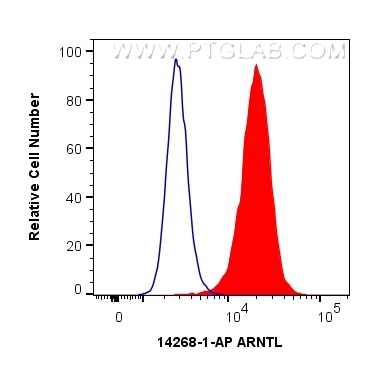- Phare
- Validé par KD/KO
Anticorps Polyclonal de lapin anti-BMAL1
BMAL1 Polyclonal Antibody for WB, IF/ICC, FC (Intra), IP, ELISA
Hôte / Isotype
Lapin / IgG
Réactivité testée
Humain, rat, souris
Applications
WB, IHC, IF/ICC, FC (Intra), IP, CoIP, ChIP, ELISA
Conjugaison
Non conjugué
N° de cat : 14268-1-AP
Synonymes
Galerie de données de validation
Applications testées
| Résultats positifs en WB | cellules HT-1080, cellules 3T3-L1, cellules HeLa, cellules MCF-7, cellules NCI-H1299, cellules SH-SY5Y, tissu hépatique de rat, tissu hépatique de souris |
| Résultats positifs en IP | cellules HeLa |
| Résultats positifs en IF/ICC | cellules MG U-87, |
| Résultats positifs en FC (Intra) | cellules HeLa, |
Dilution recommandée
| Application | Dilution |
|---|---|
| Western Blot (WB) | WB : 1:2000-1:10000 |
| Immunoprécipitation (IP) | IP : 0.5-4.0 ug for 1.0-3.0 mg of total protein lysate |
| Immunofluorescence (IF)/ICC | IF/ICC : 1:50-1:500 |
| Flow Cytometry (FC) (INTRA) | FC (INTRA) : 0.40 ug per 10^6 cells in a 100 µl suspension |
| It is recommended that this reagent should be titrated in each testing system to obtain optimal results. | |
| Sample-dependent, check data in validation data gallery | |
Applications publiées
| KD/KO | See 12 publications below |
| WB | See 60 publications below |
| IHC | See 15 publications below |
| IF | See 10 publications below |
| IP | See 1 publications below |
| CoIP | See 2 publications below |
| ChIP | See 5 publications below |
Informations sur le produit
14268-1-AP cible BMAL1 dans les applications de WB, IHC, IF/ICC, FC (Intra), IP, CoIP, ChIP, ELISA et montre une réactivité avec des échantillons Humain, rat, souris
| Réactivité | Humain, rat, souris |
| Réactivité citée | rat, Humain, souris |
| Hôte / Isotype | Lapin / IgG |
| Clonalité | Polyclonal |
| Type | Anticorps |
| Immunogène | BMAL1 Protéine recombinante Ag5586 |
| Nom complet | aryl hydrocarbon receptor nuclear translocator-like |
| Masse moléculaire calculée | 69 kDa |
| Poids moléculaire observé | 69-75 kDa |
| Numéro d’acquisition GenBank | BC041129 |
| Symbole du gène | ARNTL |
| Identification du gène (NCBI) | 406 |
| Conjugaison | Non conjugué |
| Forme | Liquide |
| Méthode de purification | Purification par affinité contre l'antigène |
| Tampon de stockage | PBS with 0.02% sodium azide and 50% glycerol |
| Conditions de stockage | Stocker à -20°C. Stable pendant un an après l'expédition. L'aliquotage n'est pas nécessaire pour le stockage à -20oC Les 20ul contiennent 0,1% de BSA. |
Informations générales
BMAL1, a basic helix-loop-helices with Per-Arnt-Sim (PAS) domain transcription factor, is one of components that has core clock function in mammals. It form a heterodimer with CLOCK, and induce the transcription of target genes by binding to E-box elements within their promoter regions. And this transcription is inhibited in a feedback loop by PER, and also by CRY proteins.Also BMAL1 is a key player in the regulation of metabolism, playing a role in adipogenesis and in the control of glucose and triglycerides levels. Due to phosphorylation modification, BMAL1 can be detected as a band in the range of 70-80 kda (PMID: 14750952).
Protocole
| Product Specific Protocols | |
|---|---|
| WB protocol for BMAL1 antibody 14268-1-AP | Download protocol |
| IF protocol for BMAL1 antibody 14268-1-AP | Download protocol |
| IP protocol for BMAL1 antibody 14268-1-AP | Download protocol |
| Standard Protocols | |
|---|---|
| Click here to view our Standard Protocols |
Publications
| Species | Application | Title |
|---|---|---|
Nat Commun The tight junction protein TJP1 regulates the feeding-modulated hepatic circadian clock. | ||
J Pineal Res Circadian misalignment impairs oligodendrocyte myelination via Bmal1 overexpression leading to anxiety and depression-like behaviors | ||
Sci Total Environ Metastatic effects of perfluorooctanoic acid (PFOA) on Drosophila melanogaster with metabolic reprogramming and dysrhythmia in a multigenerational exposure scenario | ||
Theranostics Circadian Clock Gene Bmal1 Regulates Bilirubin Detoxification: A Potential Mechanism of Feedback Control of Hyperbilirubinemia. | ||
Environ Pollut Exogenous melatonin protects preimplantation embryo development from decabromodiphenyl ethane-induced circadian rhythm disorder and endogenous melatonin reduction. |
